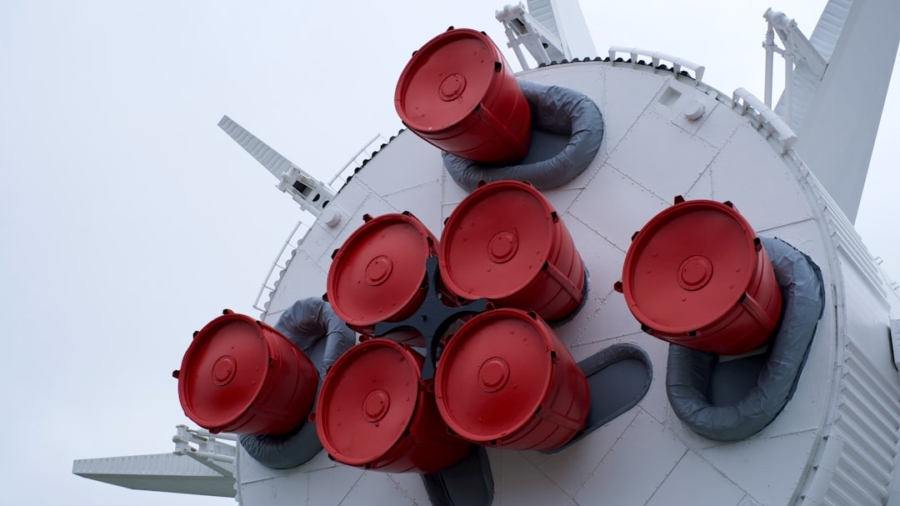Spaceports, the launch sites for spacecraft, have become increasingly significant in the context of modern aerospace endeavors.
The concept of a spaceport encompasses not only the physical infrastructure required for launching and landing spacecraft but also the associated services, technologies, and industries that support space travel.
With the advent of private companies entering the space race, the landscape of spaceports is rapidly changing, leading to a new era of accessibility to space. Historically, spaceports were primarily government-operated facilities, such as NASA’s Kennedy Space Center in Florida or the Baikonur Cosmodrome in Kazakhstan. However, the rise of private aerospace companies like SpaceX, Blue Origin, and Virgin Galactic has catalyzed a shift towards commercial spaceports.
These new players are not only launching satellites but also developing suborbital and orbital tourism, lunar missions, and even plans for Mars colonization. As a result, spaceports are becoming critical nodes in a burgeoning industry that promises to reshape our understanding of travel, commerce, and even habitation beyond Earth.
Key Takeaways
- Spaceports are specialized facilities for launching and landing spacecraft, and they play a crucial role in the development of space exploration and commercial space activities.
- Spaceports have a significant economic impact, attracting investment, creating jobs, and stimulating local economies through increased tourism and business opportunities.
- Job creation is a key benefit of spaceports, as they require a skilled workforce for operations, maintenance, and support services, leading to employment opportunities in various sectors.
- Infrastructure development is essential for spaceports, as they require advanced facilities and transportation networks to support space launch activities and accommodate growing demand.
- Spaceports can drive local business growth by creating opportunities for suppliers, service providers, and technology companies, leading to a thriving ecosystem of space-related industries in the surrounding area.
The Economic Impact of Spaceports
The economic impact of spaceports extends far beyond their immediate vicinity. They serve as catalysts for regional economic development by attracting investment, fostering innovation, and creating a diverse array of job opportunities. The establishment of a spaceport can lead to significant increases in local and state revenues through taxes generated from businesses that spring up around these facilities.
For instance, the Spaceport America in New Mexico has been instrumental in attracting aerospace companies and research institutions, contributing millions to the local economy. Moreover, the economic benefits of spaceports are not limited to direct financial gains. They also stimulate ancillary industries such as manufacturing, logistics, and technology development.
The presence of a spaceport can encourage educational institutions to develop specialized programs in aerospace engineering and related fields, thereby enhancing the local workforce’s skill set. This educational investment can lead to a virtuous cycle where skilled graduates remain in the area, further contributing to economic growth and innovation.
Job Creation and Spaceports

The job creation potential associated with spaceports is substantial. As these facilities expand their operations to accommodate various types of missions—ranging from satellite launches to crewed spaceflights—they require a diverse workforce. This includes engineers, technicians, project managers, and support staff who are essential for the planning, execution, and maintenance of launch operations.
For example, SpaceX’s operations at Cape Canaveral have led to thousands of jobs in engineering and manufacturing alone. In addition to direct employment opportunities at the spaceports themselves, there is a ripple effect that benefits surrounding communities. Local businesses often see increased demand for services such as hospitality, transportation, and retail as workers and visitors flock to the area.
This influx can lead to the creation of additional jobs in sectors that may not have been directly linked to aerospace but benefit from the economic activity generated by the spaceport.
Infrastructure Development and Spaceports
The development of infrastructure around spaceports is crucial for their success and sustainability. This includes not only the physical structures necessary for launching and landing spacecraft but also transportation networks, utilities, and communication systems that support operations. For instance, Spaceport America has invested heavily in building roads, power lines, and water systems to ensure that it can accommodate both current needs and future growth.
Furthermore, infrastructure development often leads to broader improvements in regional connectivity. Enhanced transportation links can facilitate easier access for both personnel and tourists, while improved utilities can support local businesses and residential areas. The presence of a well-developed infrastructure can also attract additional investment from companies looking to establish operations near a spaceport.
This creates a synergistic effect where infrastructure improvements lead to economic growth, which in turn justifies further investment in infrastructure.
Spaceports and Local Business Growth
The establishment of a spaceport can act as a magnet for local business growth by creating an ecosystem that supports various industries. Businesses that provide goods and services related to aerospace—such as manufacturing components for rockets or offering specialized training programs—are likely to flourish in proximity to a spaceport. For example, companies like Northrop Grumman have established operations near launch sites to capitalize on the demand for satellite technology and related services.
Moreover, local businesses that may not be directly involved in aerospace can also benefit from increased foot traffic and tourism associated with spaceport activities. Restaurants, hotels, and retail shops often see a surge in customers during launch events or when hosting visitors for educational programs related to space exploration. This diversification helps stabilize local economies by reducing reliance on any single industry while fostering a vibrant community atmosphere.
Spaceports and Tourism

Tourism is another significant avenue through which spaceports contribute to local economies. As commercial space travel becomes more accessible, spaceports are poised to become popular destinations for tourists seeking unique experiences. Companies like Virgin Galactic have already begun offering suborbital flights that allow civilians to experience weightlessness and view Earth from space.
This burgeoning sector not only generates revenue from ticket sales but also attracts media attention and global interest. In addition to direct tourism from space travelers, spaceports can host events such as rocket launches that draw large crowds. These events often include educational programs, exhibitions, and community activities that engage local residents and visitors alike.
The excitement surrounding launches can create a festival-like atmosphere that benefits local businesses through increased patronage during these events. Furthermore, partnerships with educational institutions can lead to programs designed to inspire future generations about careers in science and technology.
Environmental Considerations of Spaceports
While the economic benefits of spaceports are significant, it is essential to consider their environmental impact as well. The launch of rockets involves considerable energy consumption and emissions that can affect local ecosystems. For instance, traditional rocket propellants release greenhouse gases and other pollutants into the atmosphere during launches.
As such, there is an increasing focus on developing more sustainable technologies within the aerospace industry. Innovations such as reusable rocket systems are being explored as a means to mitigate environmental impacts. Companies like SpaceX have pioneered reusable rocket technology that significantly reduces waste associated with launches.
Additionally, some emerging spaceports are prioritizing eco-friendly practices by incorporating renewable energy sources into their operations or implementing strict environmental regulations to minimize their ecological footprint. Balancing economic growth with environmental stewardship will be crucial as the industry continues to evolve.
The Future of Spaceports in Economic Development
Looking ahead, the role of spaceports in economic development is likely to expand even further as technological advancements continue to reshape the aerospace landscape. The increasing interest in lunar exploration and potential missions to Mars will necessitate robust infrastructure capable of supporting these ambitious endeavors. As nations and private companies invest in deep-space exploration initiatives, existing spaceports may evolve into critical hubs for interplanetary missions.
Moreover, as public interest in space travel grows, so too will opportunities for collaboration between governments, private enterprises, and educational institutions. This collaborative approach can lead to innovative solutions that address both economic challenges and environmental concerns associated with space exploration. By fostering an environment conducive to research and development within the aerospace sector, spaceports can play a pivotal role in shaping the future of not only travel beyond Earth but also sustainable economic growth on our planet.
In conclusion, the multifaceted impact of spaceports on local economies is profound and far-reaching. From job creation and infrastructure development to tourism and environmental considerations, these facilities are becoming integral components of modern economic ecosystems. As we look toward the future of space exploration and commercialization, it is clear that spaceports will continue to be at the forefront of this exciting frontier.
In the article “Exploring the Role of Spaceports in Economic Development,” the focus is on how spaceports can drive regional growth and innovation. A related piece that complements this discussion is an article on optimizing content for better reach and engagement, which can be crucial for promoting spaceport initiatives and attracting investment. You can read more about enhancing content strategies in the article titled “Boost Your Content with NeuronWriter: SEO & NLP Optimization” available

